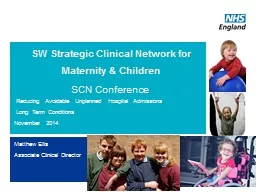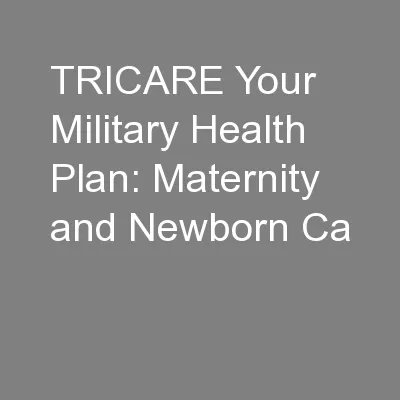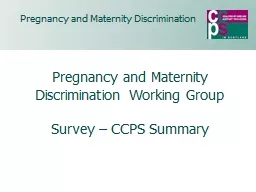PPT-SW Strategic Clinical Network for Maternity & Children
Author : tatyana-admore | Published Date : 2017-05-26
Reducing Avoidable Unplanned Hospital Admissions Long term Conditions 14 th October 2014 Exeter Rugby Club Matthew Ellis Associate Clinical Director SW Strategic
Presentation Embed Code
Download Presentation
Download Presentation The PPT/PDF document "SW Strategic Clinical Network for Matern..." is the property of its rightful owner. Permission is granted to download and print the materials on this website for personal, non-commercial use only, and to display it on your personal computer provided you do not modify the materials and that you retain all copyright notices contained in the materials. By downloading content from our website, you accept the terms of this agreement.
SW Strategic Clinical Network for Maternity & Children: Transcript
Download Rules Of Document
"SW Strategic Clinical Network for Maternity & Children"The content belongs to its owner. You may download and print it for personal use, without modification, and keep all copyright notices. By downloading, you agree to these terms.
Related Documents














